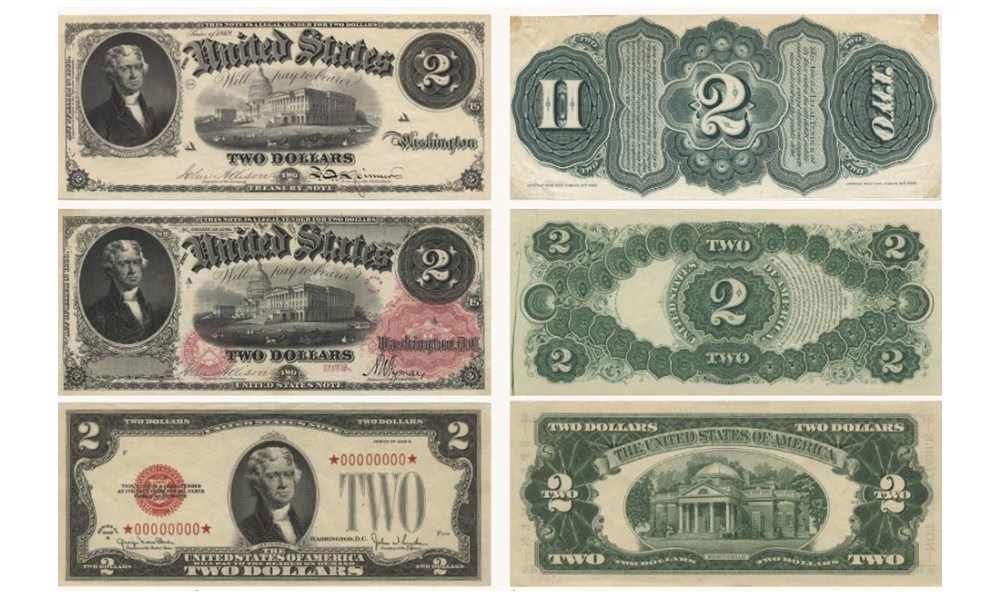
The U.S. two-dollar bill, often referred to as the “Tom” due to its portrait of Thomas Jefferson, is one of the most enigmatic and misunderstood pieces of American currency. Despite being legal tender and still in circulation, it remains a rarity in daily transactions, leading to a wealth of myths and misconceptions.
First introduced in 1862, the two-dollar bill originally featured Alexander Hamilton. In 1869, Thomas Jefferson replaced Hamilton, and his likeness has graced the bill ever since. Over the years, the $2 bill has undergone several design changes. Notably, in 1976, it was reissued to commemorate the U.S. Bicentennial, featuring John Trumbull’s painting of the signing of the Declaration of Independence on the reverse side.
The $2 bill has been shrouded in superstition and stigma. Historically, it was associated with gambling, bribery, and even prostitution. Such associations led to beliefs that the bill was bad luck, prompting some to tear off a corner to “break the curse.” These perceptions contributed to its limited circulation and the public’s reluctance to use it.
Despite its rarity in everyday transactions, the $2 bill remains in production. As of recent estimates, approximately 1.5 billion $2 bills are in circulation. However, their scarcity often leads to confusion, with some merchants unfamiliar with the denomination. There have even been instances where individuals faced challenges using them, such as a man in New York whose $2 bills were mistakenly deemed counterfeit by store employees.
While most $2 bills are worth their face value, certain editions can be valuable to collectors. For instance, uncirculated bills from the 19th century or those with unique serial numbers can fetch significant sums. A 1976 bill with a serial number of “00000001” is reportedly valued at over $20,000.
Beyond its monetary value, the $2 bill holds cultural significance. In the late 1970s, Clemson University fans began using $2 bills to demonstrate their economic impact when traveling for football games. This tradition highlighted the bill’s potential as a symbol of community and identity.
In conclusion, the two-dollar bill is more than just currency; it’s a piece of American history filled with stories, myths, and cultural significance. Its rarity in circulation only adds to its mystique, making it a fascinating subject for both casual observers and dedicated numismatists.




